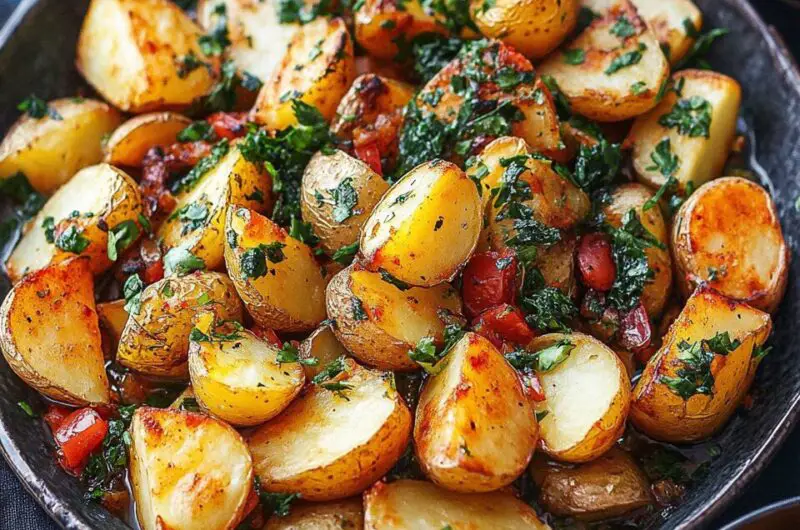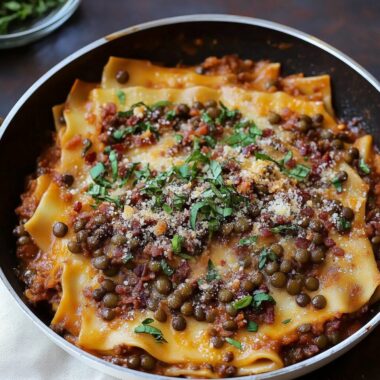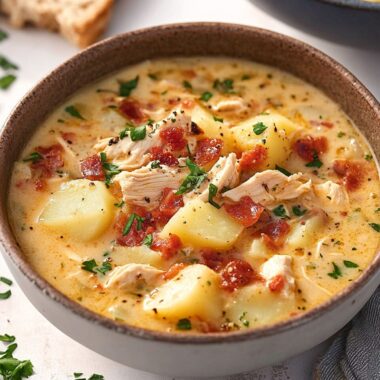These Spicy Lebanese Potatoes, or Batata Harra, are a staple in Middle Eastern cuisine and bring bold flavors to your table with just a handful of simple ingredients. The magic lies in the perfect combination of crispy roasted potatoes and a sizzling garlic-cilantro-lemon chili sauce that coats every bite with herby heat. Perfect as a side, mezze, or even the main attraction in a plant-based meal, Batata Harra proves that you don’t need meat to impress. This recipe is naturally vegan, gluten-free, and bursting with flavor, making it a hit at gatherings, potlucks, or cozy nights in. It’s comfort food with a kick Lebanese style.
Full Recipe:
Ingredients:
-
4 large potatoes, peeled and cut into 1-inch cubes
-
3 tablespoons olive oil
-
4 garlic cloves, minced
-
1 small red chili pepper, finely chopped (or 1 tsp chili flakes)
-
1 teaspoon paprika
-
1/2 teaspoon ground coriander
-
Salt, to taste
-
1/4 cup fresh cilantro, chopped
-
Juice of 1 lemon
Directions:
-
Preheat oven to 425°F (220°C).
-
Toss potato cubes with 2 tablespoons of olive oil and a pinch of salt. Spread them evenly on a baking sheet.
-
Roast for 30-35 minutes, turning halfway through, until golden brown and crispy.
-
While the potatoes roast, heat the remaining tablespoon of olive oil in a skillet over medium heat.
-
Add garlic, red chili, paprika, and coriander. Sauté for 1-2 minutes until aromatic.
-
Remove from heat and stir in lemon juice and chopped cilantro.
-
Once the potatoes are done, transfer them to a large bowl. Pour the spicy garlic-cilantro mixture over and toss well to coat.
-
Serve hot as a side or appetizer with lemon wedges.
Prep Time: 10 minutes | Cooking Time: 35 minutes | Total Time: 45 minutes
Kcal: 220 kcal | Servings: 4 servings
A Fiery Favorite in Lebanese Cuisine
Batata Harra, literally translated as “spicy potatoes” in Arabic, is a vibrant dish that embodies the spirit of Lebanese cuisine simple ingredients elevated by bold, aromatic flavors. While its core components may seem humble potatoes, garlic, chili, cilantro, and lemon this dish transforms into something extraordinary with the balance of spice, zest, and texture. It’s a staple in mezze platters, family dinners, and festive spreads, adored not just in Lebanon but throughout the Middle East and beyond.
Batata Harra stands out for its versatility and punchy flavor. It’s traditionally served as a side dish, but many enjoy it as a main course, especially when paired with dips like hummus or labneh. As the world embraces plant-based and Mediterranean diets, this naturally vegan and gluten-free dish has found a new wave of popularity among modern home cooks and foodies alike.
Origins Rooted in Simplicity and Flavor
The origins of Batata Harra are deeply rooted in Lebanese home cooking, where the focus is on maximizing flavor with minimal ingredients. Potatoes were introduced to the Middle East in the 19th century through European trade, and like many cultures, the Lebanese embraced them enthusiastically. Over time, Batata Harra evolved into the beloved form we know today crispy golden potato cubes tossed in a spicy, garlicky, lemony herb sauce.
This dish exemplifies the resourcefulness and creativity inherent in Lebanese cuisine. It’s designed to work with pantry staples and fresh herbs, making it accessible, affordable, and easy to prepare year-round. That simplicity has helped Batata Harra transcend borders, becoming a go-to dish for anyone craving comfort with a kick.
Why Batata Harra Works: Flavor and Texture in Harmony
What sets Batata Harra apart is its beautiful contrast of textures and flavors. You get a crispy, golden exterior on the potatoes, which gives way to a tender, fluffy interior. The sauce that coats them a sizzling blend of garlic, chili, lemon juice, and fresh herbs infuses every bite with layers of complexity.
-
Garlic provides a pungent, savory depth.
-
Chili (fresh or in flakes) offers a fiery heat that awakens the palate.
-
Lemon juice adds brightness and tang, cutting through the richness of the potatoes.
-
Cilantro brings a fresh, slightly citrusy herbal note, balancing out the spices.
This harmony makes Batata Harra more than just another potato dish—it’s an experience in flavor layering, something that Lebanese cuisine excels at.
A Mezze Must-Have and More
In Lebanese culinary tradition, Batata Harra is often found as part of a mezze spread—a collection of small dishes served before a main meal. Alongside dishes like baba ganoush, tabbouleh, falafel, and kibbeh, Batata Harra adds spicy flair and hearty substance.
But don’t stop at mezze. This dish pairs beautifully with grilled meats, roasted vegetables, fresh salads, and flatbreads. It’s also a great addition to wraps or served as a filling for pita sandwiches with a dollop of tahini or toum (garlic sauce). As a side, it works with both vegan and meat-based meals, making it an excellent crowd-pleaser for mixed-diet gatherings.
Many home cooks are even turning Batata Harra into a main dish by topping it with fried or poached eggs, serving it over rice, or combining it with chickpeas and sautéed greens for a complete meal.
Health Benefits of Batata Harra
While Batata Harra is indulgent in flavor, it’s also a healthier alternative to many potato-based sides, thanks to its plant-based ingredients and heart-healthy olive oil. Here are a few health benefits to highlight:
-
Potatoes are rich in fiber, vitamin C, potassium, and complex carbohydrates that provide sustained energy.
-
Olive oil, the primary cooking fat in this dish, is a staple of the Mediterranean diet, known for supporting heart health and reducing inflammation.
-
Garlic is celebrated for its antibacterial properties and cardiovascular benefits.
-
Chili peppers can help boost metabolism and are high in antioxidants like vitamin C.
-
Cilantro aids digestion and has been shown to have detoxifying properties.
For those following gluten-free, vegan, or Mediterranean-style diets, Batata Harra fits perfectly within their nutritional goals.
Tips and Variations for the Perfect Batata Harra
While the classic preparation is near-perfect as is, here are some variations and tips to elevate or customize your Batata Harra:
-
Roasting vs. Frying: Traditionally, the potatoes were deep-fried, but oven-roasting is now more popular for health reasons. It still delivers crisp results with less oil.
-
Add Depth: A sprinkle of smoked paprika or cumin can add earthy undertones.
-
Fresh vs. Dried Herbs: Always use fresh cilantro if possible for the brightest flavor, but parsley is a good substitute if you’re not a cilantro fan.
-
Citrus Boost: Add some lemon zest for an extra punch.
-
Extra Heat: Use harissa paste or cayenne if you like it hotter.
-
Serving Cold: Some enjoy Batata Harra at room temperature or even cold as part of a salad or picnic spread.
Cultural Resonance: A Dish That Connects People
Food has the unique ability to connect people to place and memory, and Batata Harra is no exception. For many Lebanese families, it’s the taste of home comforting, spicy, and soul-satisfying. It’s a dish passed down through generations, shared at weddings, holidays, and everyday dinners.
In the Lebanese diaspora, it’s a nostalgic favorite that brings a piece of Beirut, Tripoli, or the mountains of the Chouf to kitchens around the globe. And as international diners discover the richness of Lebanese cuisine, Batata Harra often serves as a gateway dish simple enough to try at home, bold enough to leave a lasting impression.
Conclusion:
In a world brimming with potato recipes, Batata Harra carves out a special place with its assertive flavor, cultural heritage, and stunning simplicity. Whether you’re serving it as part of a traditional mezze, adding it to a weeknight meal, or introducing friends to Lebanese cuisine, this dish delivers every time.
What makes Batata Harra truly remarkable is its ability to be both comforting and exciting. It’s rustic and refined, fiery and fresh, traditional and trendy. With a handful of ingredients and a few easy steps, you can bring the taste of Lebanon into your kitchen and perhaps fall a little more in love with the magic of Middle Eastern food.








